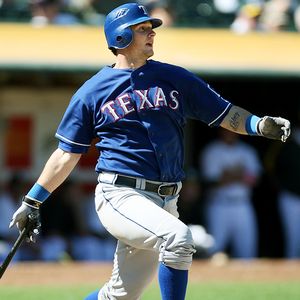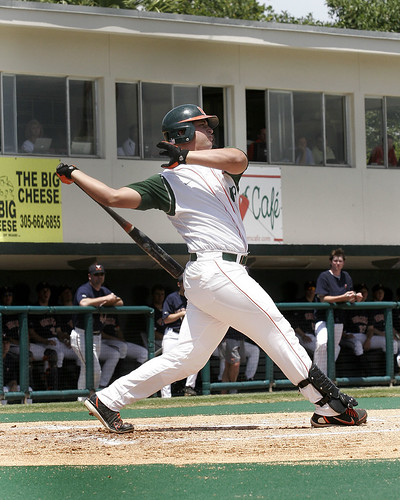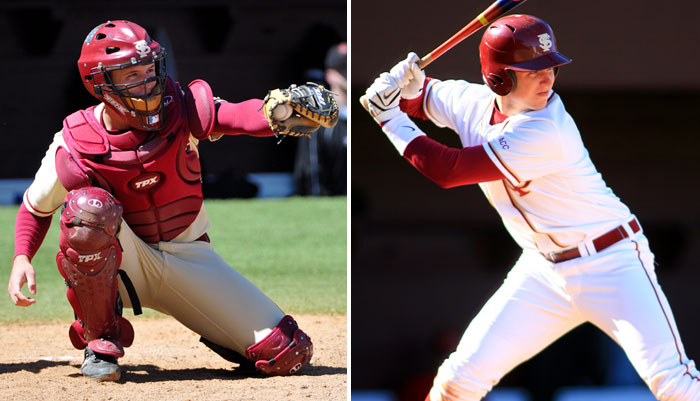
This isn't an analytical approach to prospect analysis, so much as it is just a few things that I feel are important factors in determining the future success of a prospect once they reach the major league level. Obviously, strikeout rates, walk rates, power, and speed all play an important part in a player's success, but I would consider those primary factors. The following list could be considered factors that are outside a player's realm of control, and therefore are secondary factors in my mind. This is not a comprehensive list, so if there are other factors you think are important, feel free to add to the list.
- Ballpark -- This isn't really a new idea, but I've come to realize that the ballpark a player plays in has a much more profound effect on the way they play the game and consequently their overall production level than I originally thought. Watching Alex Gordon and Delmon Young -- two hitters with tremendous power in the minors -- struggle to accumulate even moderate slugging percentages has been an eye opener for me. Kauffman Stadium in Kansas City -- where Gordon plays -- ranks 29th in the country with a home run park factor of 0.788 and the Metrodome in Minnesota -- where Young plays -- ranks 21st with a home run park factor of 0.896. For Gordon, that means an overall decrease in his home run totals at home of about 21.2% compared to what the number of home runs he would hit at balanced park like AT&T Park in San Francisco, which has a home run factor of 0.992. If Gordon played in Baltimore at Camden Yards, his home run total for 2008 would have been 157% higher at home than in Kauffman Stadium. That is a very significant difference (and should be very helpful for Matt Wieters).
- Surrounding Offense -- Once again, this isn't a new concept, but I'm beginning to feel that the hitters that surround a rising prospect can have a significant impact on his major league production. Once again, watching Alex Gordon try to find a rhythm in Kansas City where he has very little supporting talent has convinced me that without an average or above average team offense, most young hitters will find it very difficult to put up respectable numbers. Ryan Zimmerman in Washington is another good example of the surrounding offense dragging down a young, talented player. In contrast to Gordon and Zimmerman, Ryan Braun and Chris Davis both made their rookie debuts on teams that had established offensive production, which meant that pitchers and other teams spent most of their time planning for the rest of the hitters on the team, while Davis and Braun were able to fly under the radar for a while and get some success and confidence early on.
- Managerial Talent Utilization -- As a Braves fan, I grew up watching pitching coach Leo Mazzone work his magic on countless pitchers over the last decade. I'm sure other teams thought that the Braves front office was somehow more skilled at analyzing pitching talent, and thus signed a lot of overlooked players, but in reality I think it all came back to Mazzone. He tended to amplify his pitchers strengths and hide exposure to their weaknesses. While most teams might not have seen the potential in a young Greg Maddux and tried to focus on increasing his strikeout totals, Mazzone understood that by teaching Maddux to pitch low and away, he could establish a wider strike zone and then overpower hitters with control. Had Maddux been coached by a more power pitching oriented instructor, he might not have been the Hall of Fame pitcher that went on to win 355 major league games.
- Surrounding Pitching Staff -- Just as young hitters benefit from a good supporting cast, pitchers can often benefit from teammates with complimentary talent. I've heard of teams signing veteran pitchers with the hopes that they will help develop younger pitchers, and while I think that's a good enough idea, I think teams should also look for pitchers that provide good contrast to their young pitchers. By that I mean, if you have a young flame thrower like Clayton Kershaw, it would be to his benefit to pitch the day after a guy like Derek Lowe, who gets most of his outs via groundballs. The Red Sox genereally do a great job of staggering their pitchers so that one day the opposing offense faces a power pitcher, and then the next day they face a finesse pitcher like Justin Masterson or Tim Wakefield. Not a new idea here, just something to keep in mind.
- Team and Fan Expectations -- In general, I have seen very few prospects do well in the majors under the pressure of extreme team expecations. Some of the best hitters in the game were obscure, overlooked players that surprised team management and fans alike. Consider Brian McCann, Albert Pujols, Dustin Pedroia, Ryan Braun, Kevin Youkilis, Hanley Ramirez, and Josh Hamilton. Each of these players came into the majors with next to zero pressure to succeed. If they had a bad day at the plate, no one noticed because they weren't expected to do much. Since there were no expectations, everything they did was just icing on the cake. That allowed them to go out, do their best, and look past their failures quickly, which is a very important thing to be able to do in a sport that is predominantly based around individual failure. In contrast, consider the position of guys like Alex Gordon, Delmon Young, Jeff Francoeur, Ryan Zimmerman, Andy Marte, and Rickie Weeks. Each of them came into the majors with overinflated expectations, and no matter what they did, everyone thought they could do better. If they had a bad day at the plate, fans started to question them. If they went a week without a hit, managers started to squirm. If they finally hit a home run, they started trying to pull the ball until they hit another one. Ultimately, these players spent the majority of their time concentrating on their failures and overlooking their successes, and entered into a brutal cycle of depressed expectations and depressed results.




























 As many of you probably have realized by now, I'm into numbers and charts and quantifying potential, so the above chart really got me thinking. There are some incredible patterns that pop out, and if the last 50 to 75 years are any indication of the future, we could be in the middle of an 18 to 20 year bear market, with the beginning of a new bull market showing up in about 10 years.
As many of you probably have realized by now, I'm into numbers and charts and quantifying potential, so the above chart really got me thinking. There are some incredible patterns that pop out, and if the last 50 to 75 years are any indication of the future, we could be in the middle of an 18 to 20 year bear market, with the beginning of a new bull market showing up in about 10 years. 

